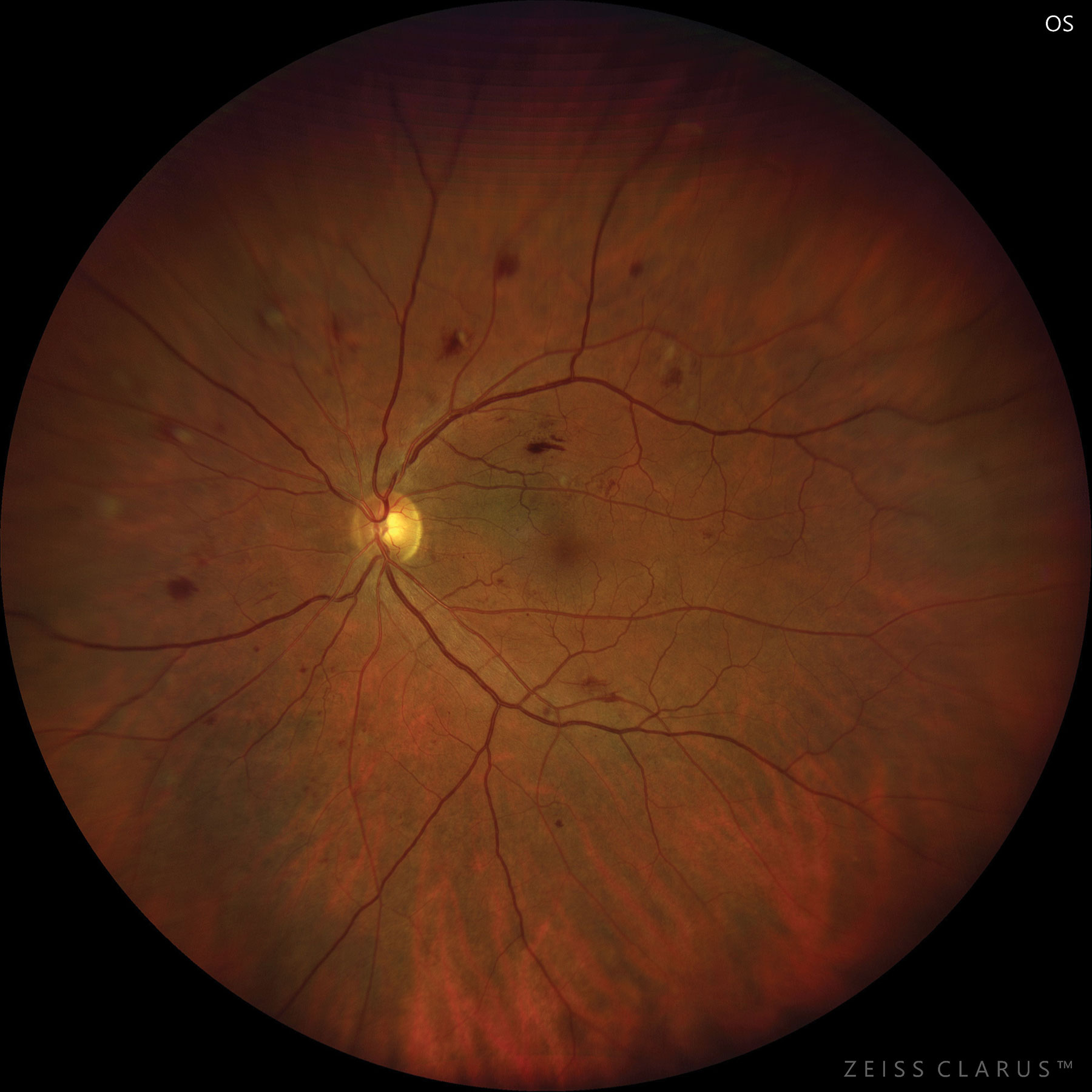 |
Researchers believe that the observed decline in DR screenings of established patients post-COVID-19 may be due to a change in patient mentality and/or a shift in the priorities of healthcare providers. Photo: Jay M. Haynie, OD. Click image to enlarge. |
The far-reaching effects of the COVID-19 public health emergency were once again highlighted in a study published last week in the journal Ophthalmic Epidemiology that investigated the pandemic’s effect on diabetic retinopathy (DR) screening.
To accomplish this, researchers analyzed more than one million health claims in central Massachusetts from 2018 to 2022 to compare the number of DR screenings from the years before and after the COVID-19 virus became widespread. The data showed that post-pandemic weekly DR screenings in the region decreased by 15.1% compared to pre-pandemic rates. Adjusting for seasonal variation, the study authors reported a post-lockdown screening rate that was 12% lower than the mean weekly DR screening rate during the pre-COVID-19 pandemic period. Established patient DR screenings saw a significant decline after the pandemic while no differences were seen for new patients.
The driving forces behind DR screening rates remain unclear, but the researchers wrote in their paper that “it is likely a combination of factors, such as patient behavior and healthcare resource availability.” Population changes due to COVID-related deaths and illnesses did not impact the data, based on a review of Census records. However, provider-related challenges, such as healthcare system disruptions and patient backlogs, may have contributed, they noted.
As to why established patients were disproportionately impacted, the researchers wrote in Ophthalmic Epidemiology that “healthcare providers may have prioritized new patients for DR screening appointments after the pandemic, resulting in a decrease in the number of appointments available or established patients.” They also suggested that the mentality of established patients may have changed from pre- to post-pandemic. These patients “may think it is acceptable to prolong the DR screening interval when it is already delayed by COVID-19,” the researchers proposed. “In contrast, diabetic patients who are new to DR screening may be more likely to be compliant with a new eye appointment.” It’s also possible, they add, that established patients with longer duration of diabetes “may have had more advanced diabetes, which is associated with increased comorbid conditions.”
The full effect of COVID-19 and DR screening and care remains to be seen, according to the researchers. “Policymakers, researchers, administrators and healthcare providers should continue to examine and quantify the effects of the pandemic so that they can best provide accessible, informed services to patients most in need,” they concluded.
Bilsbury E, Wizentier MM, Wood E, et al. The continuing impact of the COVID-19 pandemic on diabetic retinopathy screenings. Ophthalmic Epidemiology 2024. [Epub July 31, 2024]. |


